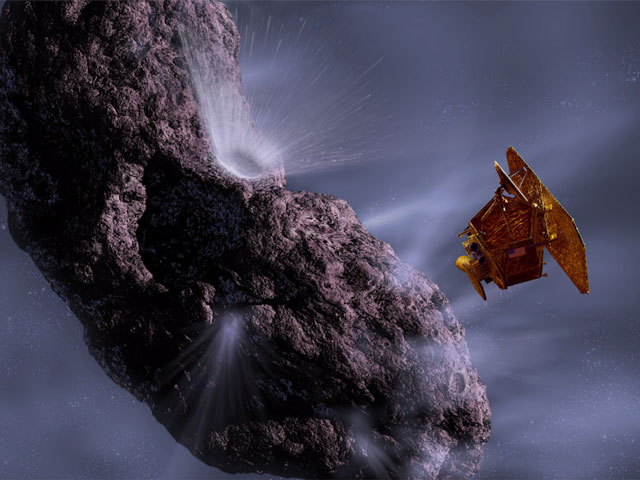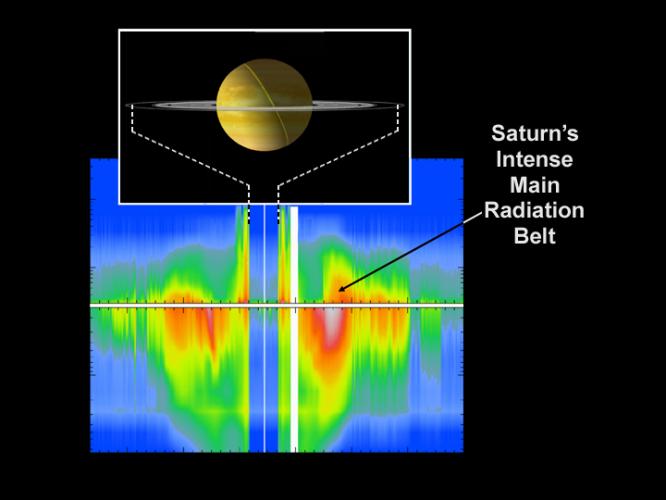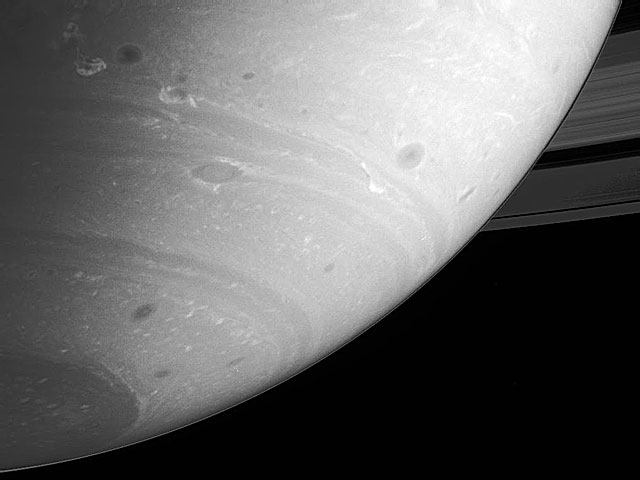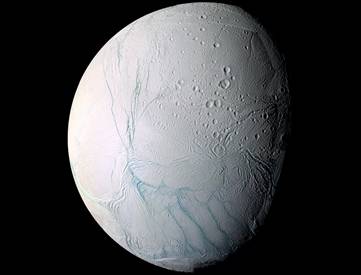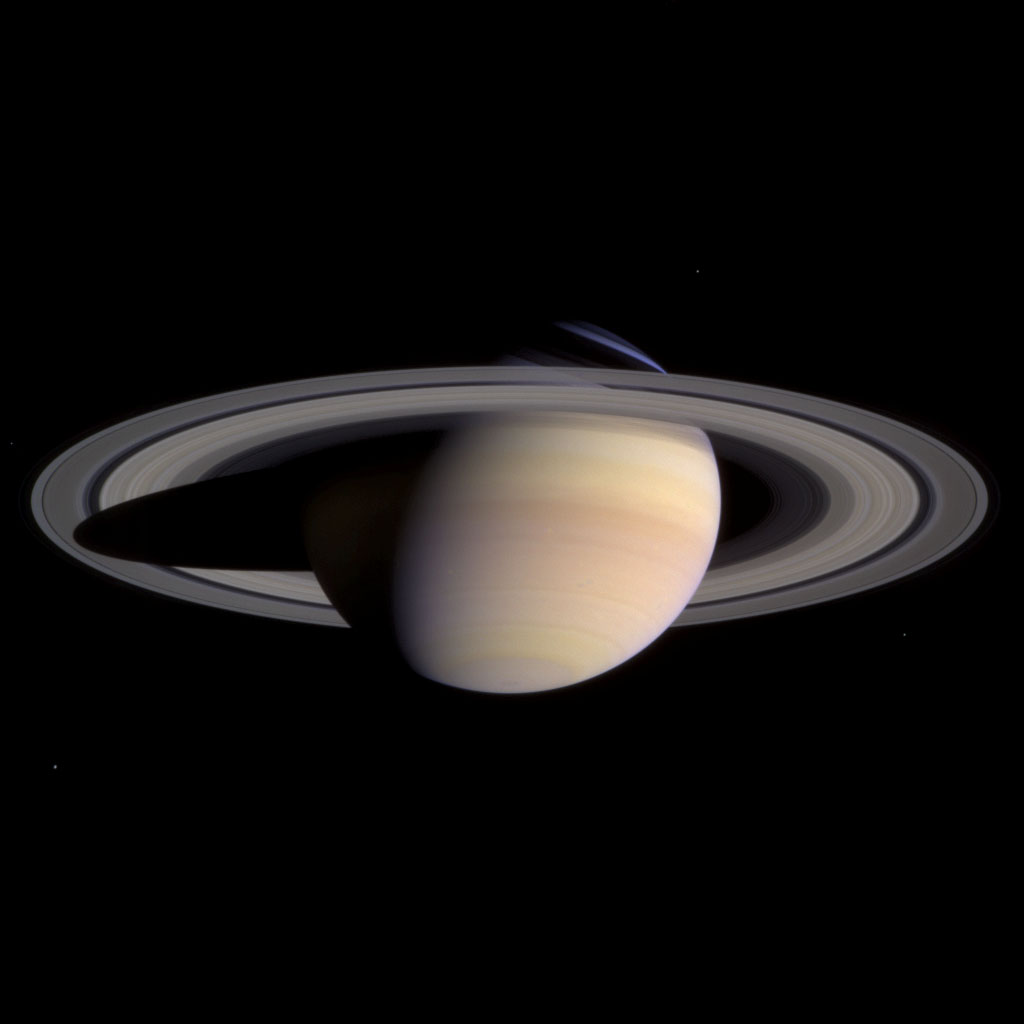Greetings, fellow SkyWatchers! If you’re enjoying a holiday weekend where you live, then start the fireworks off as we begin by remembering Deep Impact and journey towards a nearby star approaching the supernova phase. As things heat up towards one of the most spectacular conjunctions of the year, we’ll also take a look at another globular cluster study, lunar features and a binocular deep sky treat! Are you ready to step in the realm of a Barnard dark nebula? The grab your optics and let’s head out into the night…
Friday, July 4 – On this date in 2005, the Deep Impact mission entered the history books as its probe impacted Comet Tempel 1 successfully. The spacecraft relayed back to Earth a wealth of information about the material released from the surface. Thanks to this incredible mission (a collaboration between JPL, the University of Maryland, and Ball Aerospace Technologies), we’ve learned much more about the nature of comets and the protosolar nebula in which they formed.
This date in history also marks the 1947 founding of the Astronomical League – a worldwide organization with almost 15,000 members!
And did you know that celestial fireworks occurred in 1054, also on this day? It is believed the bright supernova recorded by Chinese astronomers happened at this point in history, and today we know its remnants as the Crab Nebula (M1).
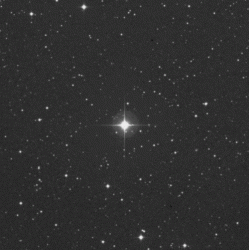 But could such an event happen again in our own celestial “backyard?” Look no further than HR 8210 (RA 21 26 26 Dec +19 22 32). It may be nothing more than a white dwarf star hiding out in late night Capricornus, but it’s a star that’s almost run out of fuel. This rather ordinary binary system has a companion white dwarf star that’s 1.15 times the mass of our Sun. As the companion also expends its fuel, it will add mass to HR 8210 and push it over the Chandrasekhar limit – the point of no return in mass. This will someday result in a supernova event located only 150 light-years away from our solar system…
But could such an event happen again in our own celestial “backyard?” Look no further than HR 8210 (RA 21 26 26 Dec +19 22 32). It may be nothing more than a white dwarf star hiding out in late night Capricornus, but it’s a star that’s almost run out of fuel. This rather ordinary binary system has a companion white dwarf star that’s 1.15 times the mass of our Sun. As the companion also expends its fuel, it will add mass to HR 8210 and push it over the Chandrasekhar limit – the point of no return in mass. This will someday result in a supernova event located only 150 light-years away from our solar system…
And that’s 50 light-years too close for comfort!
470 light-years away in the Gould Belt, and roughly 1.5 million years ago, a similarly massive star exploded in the Upper Scorpius association. No longer able to fuel its mass, it unleashed a supernova event which left its evidence as a layer of iron here on Earth, and may have caused a certain amount of biological extinction when its gamma rays directly affected our ozone layer.
Take a long look at Antares tonight – for it is part of that association of stars and is no doubt also a star poised on the edge of extinction. At a safe distance of 500 light-years, you’ll find this pulsating red variable equally fascinating to the eye as well as to the telescope. Unlike HD 8210, Alpha Scorpii also has a companion which can be revealed to small telescopes under steady conditions. Discovered on April 13, 1819 during a lunar occultation, this 6.5 magnitude green companion isn’t the easiest to split from such a bright primary – but it’s certainly fun to try! And the best is yet to come, because Antares will be occulted again in a matter of days…
Saturday, July 5– Tonight the Moon has returned in a position to favor a bit of study. Start by checking IOTA information for a possible visible occultation of Regulus, and also look for Saturn quite nearby as the slender crescent graces the early evening skies.
Although poor position makes study difficult during the first few lunar days, be sure to look for the ancient impact crater Vendelinus just slightly south of central. Spanning approximately 150 kilometers in diameter and with walls reaching up to 4400 meters in height, lava flow has long ago eradicated any interior features. Its old walls give mute testimony to later impact events, which you can see when viewing crater Holden on the south shore; much larger Lame on the northeast edge; and sharp Lohse northwest. Mark your challenge list!
For all observers, let’s take a closer look at the fascinating constellation of Lupus southwest of brilliant Antares. While more northern latitudes will see roughly half of this constellation, it sits well at this time of year for those in the south. So why bother?
Cutting through our Milky Way galaxy at a rough angle of about 18 degrees is a disc-shaped zone called Gould’s Belt. Lupus is part of this area whose perimeter contains star forming regions which came to life about 30 million years ago when a huge molecular cloud of dust and gas was compressed – much like in the Orion area. In Lupus we find Gould’s Belt extending above the plane of the Milky Way!
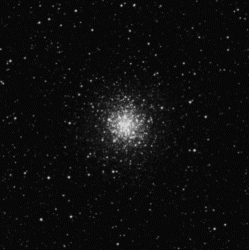 Return again to the beautiful Theta and head around five degrees west for NGC 5986 (RA 15 46 03 Dec 37 47 10), a 7th magnitude globular cluster which can be spotted with binoculars with good conditions. While this Class VII cluster is not particularly dense, many of its individual stars can be resolved in a small telescope.
Return again to the beautiful Theta and head around five degrees west for NGC 5986 (RA 15 46 03 Dec 37 47 10), a 7th magnitude globular cluster which can be spotted with binoculars with good conditions. While this Class VII cluster is not particularly dense, many of its individual stars can be resolved in a small telescope.
Now sweep the area north of NGC 5986 (RA 17 57 06 Dec 37 05 00) and tell me what you see. That’s right! Nothing. This is dark nebula B 288 – a cloud of dark, obscuring dust which blocks incoming starlight. Look carefully at the stars you can see and you’ll notice they appear quite red. Thanks to B 288, much of their emitted light is absorbed by this region, providing us with a pretty incredible on-the-edge view of something you can’t see – a Barnard dark nebula.
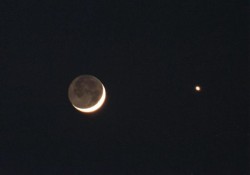 Sunday, July 6 – Celestial scenery alert! SkyWatchers… Mark your calendar and be sure to make this date with the western skyline as sunset marks one of the most picturesque views of the year! Regulus, Mars and Saturn will all dance with the da Vinci Moon. No special equipment is needed to see this event, and thanks to Leonardo da Vinci we can see the ghostly effect on the Moon as quite logical. He was the first to theorize that sunlight was reflecting off the Earth and illuminating the portion of the Moon not lit by the Sun. We more commonly refer to this as “Earthshine” – but no matter how scientific the explanations are for this phenomena, its appearance remains beautiful.
Sunday, July 6 – Celestial scenery alert! SkyWatchers… Mark your calendar and be sure to make this date with the western skyline as sunset marks one of the most picturesque views of the year! Regulus, Mars and Saturn will all dance with the da Vinci Moon. No special equipment is needed to see this event, and thanks to Leonardo da Vinci we can see the ghostly effect on the Moon as quite logical. He was the first to theorize that sunlight was reflecting off the Earth and illuminating the portion of the Moon not lit by the Sun. We more commonly refer to this as “Earthshine” – but no matter how scientific the explanations are for this phenomena, its appearance remains beautiful.
Today in 1687, Isaac Newton’s monumental Principia was published by the Royal Society with the help of Edmund Halley. Although Newton was indeed a very strange man with a highly checkered history, one of the keys to Newton’s work with the theory of gravity was the idea that one body could attract another across the expanse of space.
Now let’s have a look at some things gravitationally bound as we start at Eta Lupi, a fine double star which can even be resolved with binoculars. Look for the 3rd magnitude primary and 8th magnitude secondary separated by a wide 15″. You’ll find it by starting at Antares and heading due south two binocular fields to center on bright H and N Scorpii – then one binocular field southwest (RA 16 00 07 Dec 38 23 48).
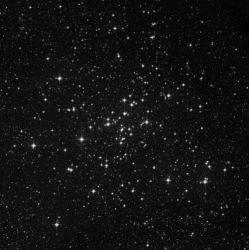 When you are done, hop another roughly five degrees southeast (RA 16 25 18 Dec 40 39 00) to encounter the fine open cluster NGC 6124. Discovered by Lacaille and known to him as object I.8, this 5th magnitude open cluster is also known as Dunlop 514, as well as Melotte 145 and Collinder 301. Situated about 19 light-years away, it will show as a fine, round, faint spray of stars to binoculars and be resolved into about 100 stellar members to larger telescopes. While NGC 6124 is on the low side for northern observers, it’s worth the wait for it to hit its best position. Be sure to mark your notes, because this delightful galactic cluster is a Caldwell object and a southern skies binocular reward!
When you are done, hop another roughly five degrees southeast (RA 16 25 18 Dec 40 39 00) to encounter the fine open cluster NGC 6124. Discovered by Lacaille and known to him as object I.8, this 5th magnitude open cluster is also known as Dunlop 514, as well as Melotte 145 and Collinder 301. Situated about 19 light-years away, it will show as a fine, round, faint spray of stars to binoculars and be resolved into about 100 stellar members to larger telescopes. While NGC 6124 is on the low side for northern observers, it’s worth the wait for it to hit its best position. Be sure to mark your notes, because this delightful galactic cluster is a Caldwell object and a southern skies binocular reward!
Wishing you an awesome weekend…
This week’s photos are courtesy of: Deep Impact Mission – Credit: JPL/NASA, HR 8210 – Credit: Palomar Observatory courtesy of Caltech, NGC 5986 – Credit: Palomar Observatory courtesy of Caltech, Da Vinci Moon – Credit: NASA and NGC 6124 – Credit: Palomar Observatory courtesy of Caltech.

